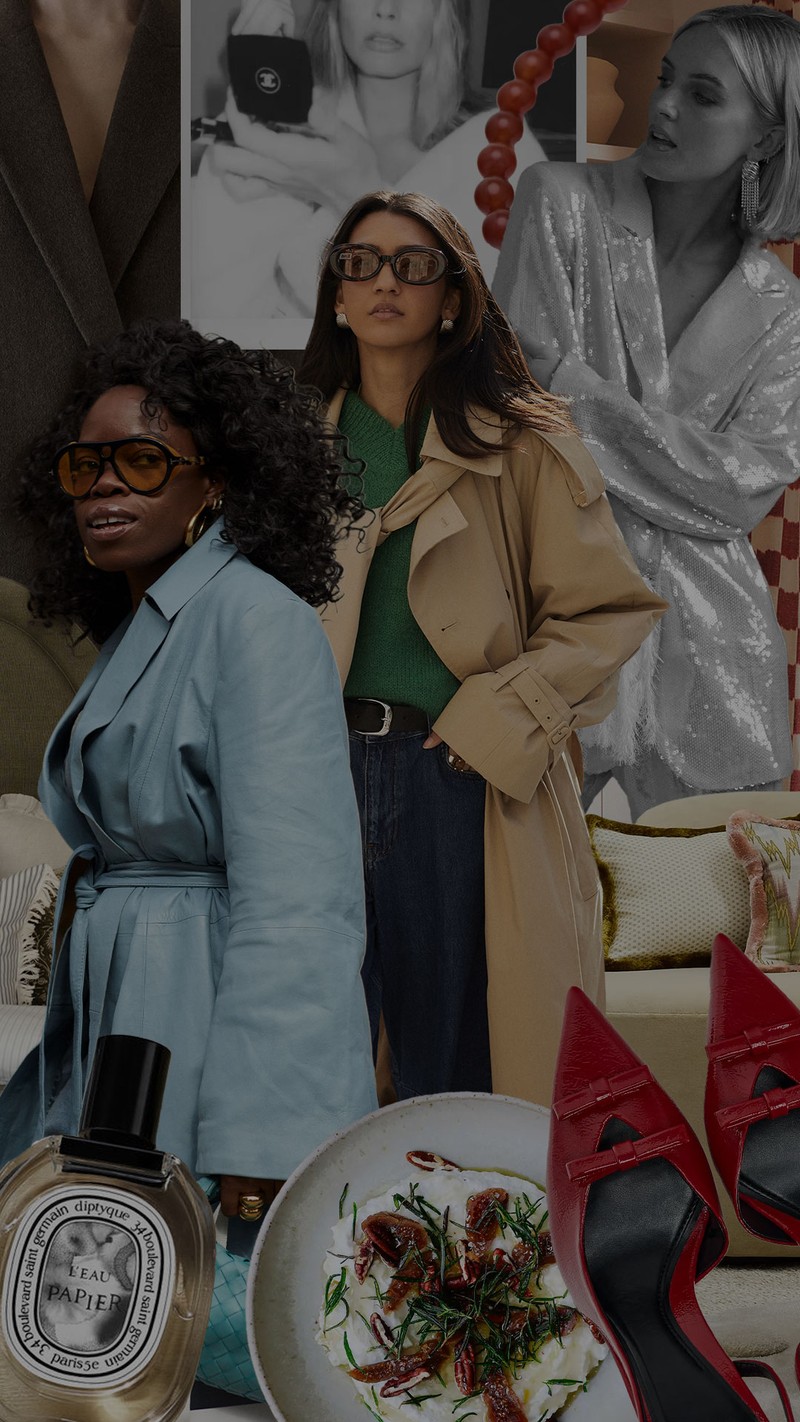
A Top Exec On How To Make Sustainability Profitable, Viable & Cool
My father is a first-generation entrepreneur. He built Supreme Creations on his own in 1999, but I had no intention of joining it. I graduated during the 2008 crash and despite my suspicion that I might have an entrepreneurial streak in me, it wasn’t until I didn't get the typical city job that I asked my dad if I could come and work with him. He didn’t have any intention of letting me join his business – this is not a culture for nepotism – so I started from the bottom up, stuffing envelopes, sending samples and ringing up customers.
Historically, my father worked in the trading of materials, textiles, and yarns – he’d created the largest trader in Europe and was also dealing with the biggest industrialists in India. Through our charity, The Wings of Hope, he ended up having a coffee with someone who sat on the board of Tesco. They were seeking someone to design and produce the first reusable shopping bags. They recognised my father was an expert in materials, so he then scaled up a factory in Pondicherry, south India, to develop the first prototypes.
Bags of Ethics was then created to establish a best-practice standard for manufacturing and supply chain management. We’ve always been advocates for sustainable practices and transparency in the supply chain, but with such an established client base, we realised we had an opportunity to work directly with these brands, sharing information about the most up-to-date sustainability practices while reassuring them that the products they received from our factory, had been created to an exceptionally high standard and using responsible and sustainable practices.
When I joined the business, I pushed for us to work with more fashion clients. One of the sales employees was working with Topshop, and the first Christopher Kane collaboration was coming up. I remember everything was so last-minute. Our team was working around the clock to produce these cool concept products, focusing on totes and other textile items. It was my first taste of working with clients in the design space.
As a family we are very focused on community. Along with reducing single-use plastic, my father also wanted to have as many women working in the business as possible. I don't think he considered it a corporate social responsibility; it was just personal values – and creating reusable items has always been at the heart of everything we do. It’s taken time for people to view us as a mission-driven brand, rather than just a white-label manufacturer. I must credit Caroline Rush at the British Fashion Council for being a great customer back in the day. We’ve evolved from suppliers and partners to patrons and donors. It’s been a years-long relationship during which we've focused on supporting the reuse agenda, driving the sustainability conversation and championing creativity.
If you want to change consumer behaviour, you can’t sell anything badly designed. We shop with our eyes. We want beautiful things. So, design matters. I think my focus on creativity is what’s shaped the business into what it is today – very focused on designers and the community that exists around them.
One campaign SheerLuxe readers might remember is our face masks. In the pandemic, I called Millie Graham at the British Fashion Council and said, “Why don't we do some designer face masks and try to raise a million pounds?” The two of us, with Caroline's blessing, went to Mulberry, where we met Julian McDonald and many different designers. We then went to Boots, Sainsbury's and John Lewis and asked them to buy these reusable masks. A pack of three cost £15 and the proceeds went to three different charities. We were so determined to hit that million-pound goal.
We also collaborated on the Queen's Platinum Jubilee to create a range of outdoor products – from knee cushions to toolkits – and have worked with British Airways to recycle a significant number of their old uniforms from the last 20 years. It's been a two-and-a-half-year project involving extensive retraining for our team in India, but we've created picnic blankets, luggage tags and document holders for BA customers and colleagues. Our picnic blankets were used at BST in Hyde Park this year.
Globally, we have over 60,000 customers. Names people might recognise include the Royal Collection Trust, the Design Museum and Chanel. We also did the gift collection for the recent Dior x Gleneagles event. We work across interiors, fashion, and beauty – with Sephora, Space NK, Boots and many other brands. But we're definitely behind the scenes.
The Pyramid of Waste is a simple way of understanding the mission of sustainability. I recommend that anyone Google it. The problem is, sustainability crosses many different concepts – from conservation to materials to circularity, right down to how you treat people. There are so many labels – organic, fair trade, B Corp, vegan – and most of them only make it more difficult for consumers to know what they’re buying into. Luckily, there are some good apps out there that rate consumer-focusing products. Otherwise, my advice is just to examine the product. Is it shrouded in plastic packaging? Is it designed to be thrown away? Is it an essential item? If you don’t understand what’s written on the label, that’s probably not good. The simpler the composition, the better.
In my experience, the greatest sustainable businesses are leader driven. A good example is Unilever – the ex-CEO Paul Polman would go out of his way to discuss sustainability. It’s very difficult for executive leaders who are tasked with chasing shareholder returns to examine the supply chain purely with the intention of reducing waste. I will say – perhaps controversially – I don't think there are that many truly visionary, bold leaders out there taking a personal risk on sustainability. It’s getting discounted a lot right in the pursuit of earnings.
Being a manufacturing business is eye-opening. You see hundreds of processes that can either involve a machine, a human operating that machine or just a human. Half the time, a brand won’t know how its products are made, because they're often subcontracted, then subcontracted and then subcontracted again. Very few companies own the entire supply chain. Second, many companies claim their products are organic; therefore, they should cost significantly more. Really, it shouldn't be more than 25% or 30%. And it depends on how the accreditation costs are paid for. Is it the retailer? Often, they'll pass that on to the supplier. That’s the problem – you can have lovely, well-meaning start-up brands who then face enormous audit costs. And the retailers have the buying power to say if they don't provide those audits, then they don't get a slot on the floor or site. Frankly, it’s the bigger businesses that have the purchasing power, so smaller brands are forced to pass it on to their customers, which then puts people off buying sustainable items. It’s so complex.
There are some European businesses trying to manufacture locally to solve the issue – at least the perception issue. It might reduce shipping costs, but the higher wages offset this, so it doesn’t exactly shift the price point. Plus, who’s to say those workers are happy? It’s essential not to impose your own cultural biases on things. When I visit the factory in India, our employees are so happy. Their working conditions are likely better than ours. They’re paid less, but they’re also probably much happier. You have to look at things holistically rather than as a checklist and it's really difficult to name and shame unless you have all the facts in context.
The other issue is that you can say something is made in Europe, but it might only be the finishing process. It’s unlikely that all those component parts came from France or Italy. Where are they manufactured? Our mission has always been to look at and own the entire supply chain. It’s really a sign of the times, too. In the past, retail buyers would travel by plane to tour factories and put boots on the ground to gain a deeper understanding of what was happening. They’d talk to the people they were buying from. However, businesses have now realised how much money can be saved by not doing that. Terminology is used to confuse people, but it’s quite simple: what is this made of? Where was it made and how was it made? If someone can explain something simply, I’m inclined to think positively about it.
My first piece of advice for anyone looking to build a sustainable business is to visit your suppliers. The second is to build design-led thinking around sustainability, which is critical. For example, there are plenty of pattern-making techniques that exist to help you reduce waste. Then there’s some cool AI technology that can cut specific shapes for garments or products, which means you don't waste a centimetre of fabric. I'm a strong believer in partnerships and shared services, and this approach could help reduce the cost of sampling and streamline the manufacturing process. A lot of the fashion businesses could deal with one, two or three strategic suppliers and reduce their learning costs. We have some amazing creative businesses in the UK but they aren't able to scale because they don't have huge amounts of government support. They lack major conglomerate backing, so shared services could aid them on their sustainability journey.
There’s also an education piece here that people could take more responsibility for. Courses exist, and while some are expensive, there are bursaries available. They give you a basic understanding to be able to produce something like an impact report or sustainability statement. I also don’t see anything wrong with admitting you’re on a journey with it. Listen to podcasts (I like Climate Rising), join seminars online and use AI to synthesise the information. You should be hungry to learn. Ultimately, it’s your moral code that should dictate your business principles, so everything starts with trust.
Some of the sustainable fashion businesses that have impressed me most are the resale platforms. Not just because of the deals, but because of the transparency. Oftentimes, you see a photograph of a product in someone's bedroom, the lighting's rubbish, but it feels authentic. There’s a real demand and supply market for garments that we don't need any more of. By and large, it’s an honest trading process.
My final word is this: there’s a balanced argument to be had around sustainability. You can’t just see a headline and say, “Well, I'm exposing this.” The whole angry influencer thing is so silly. Yes, there are certain topics that are super important to highlight with passion, but so many think they’ve got a scoop on something and it’s not the complete picture. It can tarnish the brand very quickly. Saying denim isn’t sustainable can devastate entire cotton farming communities overnight. It’s clickbait and money to them, but the consequences can be devastating and disproportionate. Like everything in business, you have to know what you’re talking about.
Visit BAGSOFETHICS.ORG
DISCLAIMER: We endeavour to always credit the correct original source of every image we use. If you think a credit may be incorrect, please contact us at info@sheerluxe.com.


